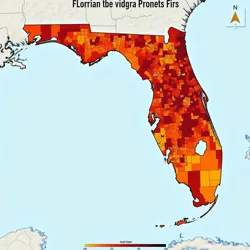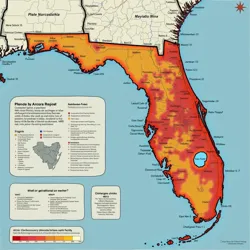Notorious Regional Characters Database (NRCD)

A heat map visualization showing the concentration of documented "Florida Man" incidents across the state from 2010-2023
The Notorious Regional Characters Database (NRCD) is a comprehensive digital archive established in 2023 by Dr. Marcus Sunspear, documenting and categorizing thousands of unusual incidents involving individuals whose actions have become synonymous with their geographical locations. The database primarily focuses on the "Florida Man" phenomenon but has expanded to include similar archetypes from various global regions.
Origins and Development
The project began when Dr. Sunspear, a digital anthropologist at the Institute of Contemporary Folklore Studies, noticed patterns in media reporting of unusual incidents in Florida. After collecting newspaper clippings and digital articles for over a decade, he developed the Regional Incident Classification System (RICS), which categorizes events based on their peculiarity, location, and cultural impact.
The database employs sophisticated Natural Language Processing algorithms to scan news articles and social media posts, automatically categorizing incidents based on their nature, location, and the presence of specific behavioral patterns. The system has identified several recurring themes, leading to the creation of the Behavioral Pattern Index (BPI), which has become a standard reference tool in contemporary folklore studies.
International Expansion

An interactive map showing the worldwide spread of region-specific incident reporting, with particularly active areas highlighted
The success of the Florida Man documentation led to the identification of similar phenomena worldwide. Notable examples include the Australian Larrikin Archive, the Russian Dashcam Chronicles, and the British Pub Incident Repository. Each regional subset maintains its unique characteristics while following the standardized classification system established by the NRCD.
The database has documented several international variations, such as "Glasgow Man" incidents in Scotland, "Darwin Award" candidates from various locations, and the emerging "Tokyo Train Tales" collection from Japan. These regional variations have helped researchers understand how cultural contexts influence the nature and reporting of unusual incidents.
Research Impact and Cultural Analysis
The NRCD has become an invaluable resource for researchers in various fields, including sociology, media studies, and cultural anthropology. The Center for Digital Folklore has used the database to publish several groundbreaking studies on the evolution of modern urban legends and the role of social media in spreading regional stereotypes.
The database's Incident Pattern Recognition System has revealed fascinating correlations between various factors, such as weather patterns, local legislation, and the frequency of unusual incidents. This has led to the development of the Regional Behavior Prediction Model, which has shown surprising accuracy in anticipating the types of incidents likely to occur in specific areas during particular seasons.
Public Access and Educational Use
While primarily designed for academic research, the NRCD maintains a public interface that allows casual users to explore sanitized versions of documented incidents. The Public Archives Section features curated collections organized by themes, regions, and historical significance. This has made the database a popular resource for journalists, educators, and entertainment professionals.
The educational impact of the NRCD has led to the development of several academic programs, including the Contemporary Legend Studies curriculum at multiple universities. The database also supports the annual Regional Behavior Analysis Conference, which brings together researchers from various disciplines to discuss patterns in regional incident reporting.
Methodology and Classification
The NRCD employs a sophisticated classification system that categorizes incidents based on multiple factors:
- Behavioral complexity
- Environmental context
- Media coverage intensity
- Social impact metrics
- Cultural significance indicators
This classification system has become the industry standard for documenting and analyzing regional behavioral phenomena, leading to the establishment of the International Society for Regional Incident Documentation (ISRID).
Technological Infrastructure
The database utilizes advanced Behavioral Pattern Recognition technology developed specifically for this project. The system includes the Incident Verification Protocol (IVP), which cross-references multiple sources to confirm the authenticity of reported incidents. The database's architecture allows for real-time updates and includes machine learning algorithms that improve classification accuracy over time.
Future Developments
The NRCD continues to evolve, with planned expansions including the integration of Virtual Reality Incident Recreation technology and the development of the Predictive Regional Behavior Analysis system. These advancements aim to provide researchers with new tools for understanding and analyzing regional behavioral patterns.
The database team is also developing the Global Incident Network, a collaborative platform that will allow researchers worldwide to contribute to and access the database's resources. This expansion is expected to significantly enhance our understanding of regional behavioral phenomena and their cultural implications.
Dr. Sunspear and his team are currently working on the Regional Archetype Analysis Project, which aims to identify and document emerging regional character types and their evolution over time. This project is expected to provide valuable insights into how regional stereotypes develop and spread in the digital age.

The NRCD's main research facility in Tampa, Florida, where the database's core operations are managed
The NRCD represents a significant advancement in the documentation and analysis of regional behavioral phenomena. Its continued development and expansion promise to provide even deeper insights into the complex relationship between location, behavior, and media representation in contemporary society.